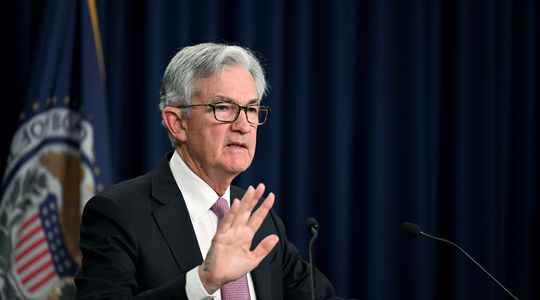On June 15, the American Central Bank (the Federal Reserve) announced an increase in its key interest rate of 0.75 point, i.e. the largest increase since 1994. Some consider that this decision comes too late, that the new rate target remains too low (1.5% to 1.75%), and that the Fed has already lost the race against inflation. Others, on the contrary, find the increase disproportionate and fear that it will cause a recession that it would still be possible to avoid. To shed light on this debate, we must try to understand Jerome Powell’s reasoning.
The Fed Chairman knows that the current price rise is partly due to factors over which his key rate has no control, such as soaring energy and commodity prices. The latter jumped following external shocks, unrelated to the American economy, such as the invasion of Ukraine by Russia. So why increase US rates, and thus penalize the domestic economy?
The US economy at a crossroads
First, the very high level of inflation, which stood at 8.6% in May across the Atlantic, is explained not only by supply disruptions but also by artificially high demand. In March 2021, Joe Biden’s $1.9 trillion recovery plan increased household purchasing power and allowed them to build up reserves which, a year later, continue to fuel their consumption. By boosting the domestic economy, the Biden plan has also helped bring the unemployment rate down to a historic low and allowed Americans to negotiate wage increases, contributing to higher prices and demand. Conversely, the Fed’s rate hike in mid-June drove up the cost of borrowing and pushed stock market assets down. Households who were thinking of going into debt to buy an apartment are thus encouraged to postpone their purchase, while those who have lost money on the stock market must slow down their lifestyle. The rise in interest rates should therefore slow down consumption and investment and, therefore, curb inflation.
But the main thing is elsewhere. Beyond somewhat mechanical price and wealth effects, the rate hike is aimed at a more important and more elusive target: expectations. Powell knows that the American economy is at a crossroads. Until recently, Americans estimated that inflation would drop to about 3% within five years. As long as they based their decisions on such expectations, there was reason to hope that inflation would go away on its own. But a survey from the University of Michigan, published a few days before the Fed’s announcement, revealed that medium-term inflation expectations are now also rising, making the persistence of inflation and its spread to all sectors of the economy more likely. We know that businesses increase their prices more if they expect their competitors to do the same. Similarly, unions demand higher wage increases if they believe prices will continue to rise. In return, the rise in wages tends to reinforce the rise in prices. In short, the generalized belief that prices will increase can contribute to this increase and give rise to an inflationary spiral between prices and wages.
To avoid this scenario, the Fed must convince that inflation remains temporary. Powell and the other “governors” of the American central bank constantly communicate on the situation and on their future intentions, in order to facilitate the coordination of the American economy and find the right balance. But the key rate remains the strongest instrument at their disposal. By increasing it as they have just done, they wanted to signal in a credible way that they would do what is necessary to fight against inflation.
Will this be enough to change the expectations of households and businesses? No one knows, as our understanding of the mechanisms influencing our behavior remains imperfect. We sometimes imagine the presidents of central banks as technicians monitoring their indicators, reducing the pressure here, giving a turn of the screw there, to ensure that the economy purrs without overheating. In reality, the existence of self-fulfilling anticipations and multiple equilibria makes their task more like navigating the stars.
